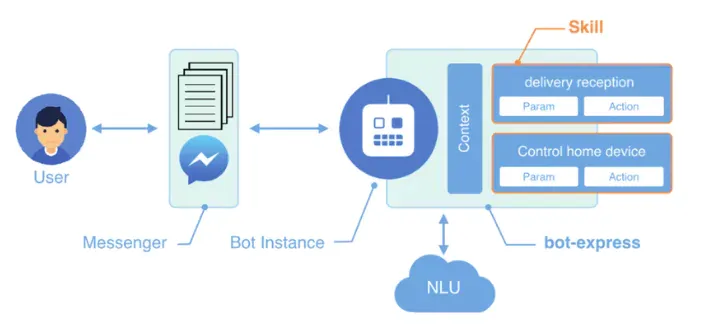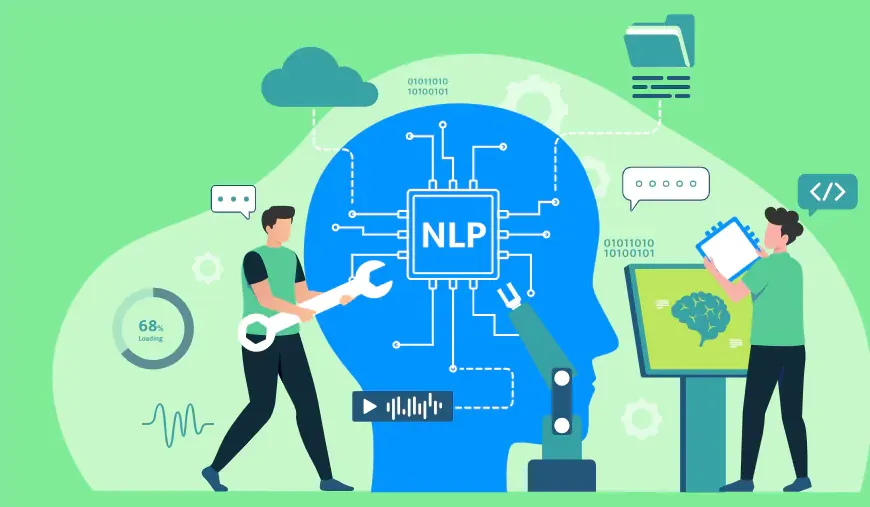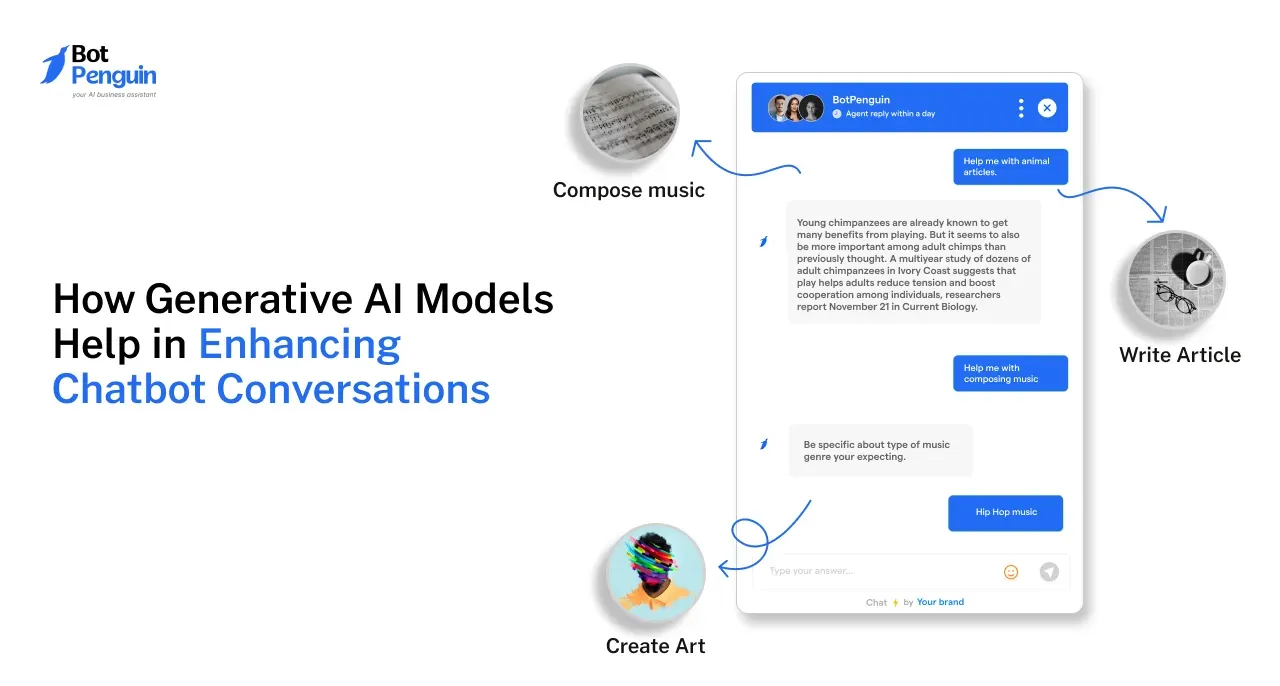Introduction
Ever wondered how Siri or Alexa can understand what you're saying? It's all thanks to certain artificial intelligence technologies called NLP and NLU.
NLP stands for Natural Language Processing, while NLU means Natural Language Understanding. They sound very similar, right? And they're related. But they are not the same thing.
In this blog, we'll discuss what each one does, how they differ, and why these differences matter. The best part?
We'll keep things super simple, so even if you're not a techie, you'll get the hang of it.
Let's explore the world of AI, exploring how it allows machines to communicate almost like humans. Let's get started.
What is NLU?
Natural Language Understanding (NLU) is a branch of AI that focuses on interpreting human language.
It enables machines to comprehend and extract meaning from text or speech inputs.

NLU models aim to capture the semantic and pragmatic intent behind human language, going beyond basic syntactical analysis.
Now, let us see the key components of NLU
Key components of NLU
NLU consists of several key components that work together to understand and interpret human language accurately.
Syntax analysis
Syntax analysis involves the process of understanding the grammatical structure of sentences.
It helps identify the relationships between words and the overall sentence structure.
This component ensures that the input is correctly parsed and understood.
Semantic understanding
Semantic understanding aims to capture the meaning of the input by analyzing the relationships between words and phrases.
It allows NLU models to comprehend the context and the intent behind the user's input.
Pragmatic understanding
Pragmatic understanding focuses on interpreting the user's input based on the context and broader knowledge.
It considers the user's goals and assumptions to provide appropriate responses.
Now, in the next section, we will see NLU techniques.
NLU techniques
Various techniques are employed in NLU to achieve accurate language understanding.
These techniques can be categorized into rule-based, statistical, and deep-learning approaches.
Rule-based approaches
Rule-based approaches involve constructing a set of predefined rules that help machines understand and interpret human language.
These rules are created based on linguistic and domain-specific knowledge. While rule-based approaches are precise, they can be limited in handling complex language nuances.
Statistical approaches
Statistical approaches involve training models on labeled datasets to predict an input's most probable meaning or intent based on statistical patterns. These models utilize Hidden Markov Models (HMMs) and Conditional Random Fields (CRFs) for accurate language understanding.
Deep learning approaches
Deep learning approaches use neural networks, especially recurrent neural networks (RNNs) and transformers, to learn and understand the complexities of human language.
These models can automatically learn from large amounts of data and capture intricate language nuances.
After looking into the techniques, let us see the NLU use cases.
NLU use cases
NLU has a wide range of applications across various industries. Some common use cases include:
Virtual assistants: NLU enables virtual assistants like Siri, Google Assistant, and Alexa to effectively understand and respond to user commands and queries.
Chatbots: NLU is crucial to understanding user queries and providing appropriate responses, effectively automating customer interactions.
Automated customer service systems: NLU helps build intelligent customer service systems to process and understand customer queries, providing efficient and accurate assistance.
With NLU, machines can understand language at a fundamental level and comprehend complex user inputs in a contextual manner.
As the guide is about NLU vs NLP, we have covered basics about NLU, now its time to look into NLP.
What is NLP?
Natural Language Processing (NLP) is a branch of AI focusing on the interaction between computers and human language, including text and speech.
NLP encompasses various techniques and algorithms to enable machines to understand, analyze, and generate human language.
Now, let's see the key components of NLP.

Key components of NLP
NLP consists of several key components that work together to understand and process human language effectively.
Tokenization
Tokenization is the process of breaking down a text into individual words, phrases, or sentences.
It forms the basic unit of analysis for further NLP tasks, such as part-of-speech tagging and syntactical analysis.
Morphological analysis
Morphological analysis involves the study of word structure and the identification of variations or inflections.
It helps in understanding the relationship between words and their grammatical forms.
Named entity recognition
Named entity recognition identifies and classifies named entities, such as names of people, organizations, locations, and dates, in a text.
It helps in extracting important information from unstructured text data.
Parsing
Parsing involves analyzing the syntactic structure of sentences to understand the relationships between words and phrases.
It helps understand the grammatical structure and identify the subject, object, and verb in a sentence.
Word sense disambiguation
Word sense disambiguation aims to determine the correct meaning of a word in a given context.
It helps resolve ambiguity and determine the appropriate interpretation of words with multiple meanings.
Coreference resolution
Coreference resolution involves identifying and linking noun phrases that refer to the same entity. It helps in understanding pronouns and maintaining coherence in the text.
Now, after the key components of NLP, let us see the NLP techniques.
NLP techniques
NLP utilizes various techniques to process and analyze human language effectively.
Rule-based approaches
Rule-based approaches involve creating predefined rules and patterns to analyze and process language.
These rules are created based on linguistic knowledge and domain-specific rules.
Statistical approaches
Statistical approaches in NLP involve training models on large amounts of labeled data to make predictions based on statistical patterns.
Techniques like probabilistic models, Hidden Markov Models (HMMs), and Conditional Random Fields (CRFs) are used to achieve accurate language analysis.
Deep learning approaches
Deep learning approaches in NLP leverage neural networks to automatically learn patterns and capture language complexities.
Convolutional Neural Networks (CNNs), Long Short-Term Memory (LSTM), and transformers are widely used deep learning models in NLP tasks.
After looking into the techniques let us see the use cases of NLP.
NLP use cases
NLP has numerous practical applications across various domains. Some common use cases include:
Sentiment analysis: NLP is used to analyze and categorize the sentiment expressed in text data, allowing businesses to gain insights into customer opinions, reviews, and feedback.
Machine translation: NLP enables the automatic translation of text from one language to another, facilitating communication and understanding between people who speak different languages.
Text summarization: NLP techniques summarize lengthy documents or articles, providing concise and informative summaries for efficient information consumption.
NLP is crucial in making human language accessible to machines and enabling various applications that enhance communication, understanding, and productivity.
We have covered the basic of NLU vs NLP, now let us compare NLU vs NLP.
Comparing NLU and NLP
While NLU and NLP are closely related, they focus on different aspects of language understanding.
Sure, here is the comparison with a more structured approach:
Scope
Natural Language Processing (NLP): Natural Language Processing is a broad umbrella term in AI, encompassing all machine manipulations of human language. NLP involves various sub-processes to convert human language into a machine-readable format, including parts of speech identification, chunking, and named entity recognition. For instance, Google Translate's ability to convert text from one language to another is an NLP application.
Natural Language Understanding (NLU): Conversely, Natural Language Understanding is a subset of natural language processing that specifically involves the contextual nuance of language processing and comprehension. The main goal here is to achieve as close to human-like language understanding as possible. When Siri accurately responds to the command, "Set an alarm for 6 a.m. tomorrow", it's demonstrating its NLU capabilities.
Operations
Essentially, NLP breaks language into smaller pieces and attempts to analyze the relationships between these fragments to understand how they come together to generate meaning. For example, NLP would parse the sentence “I love going to the beach” into 'subject-verb-object' to extract meaning.
NLU goes past the initial processing stages to understand the human-language data logically or conceptually. For instance, if someone says, "Book a table for two at 7 PM," the system should comprehend that a restaurant reservation is being requested.
Challenges
Major NLP challenges include handling the vast amount of unstructured data, understanding grammatical idiosyncrasies across languages, and interpreting meanings based on context. For example, a sentence like "We saw her duck" poses an ambiguity problem for NLP.
NLU faces hurdles such as the diversity of languages, detection of sarcasm, understanding of colloquial phrases, and inherent cultural nuances within the language. Figuring out that the phrase "This is sick!" could also mean "This is fantastic!" is an NLU challenge.
Purpose
The main aim of NLP is to pave the way for machines to process and understand human language in a constructive manner. Examples include spam filters which are fundamental NLP applications that distinguish between genuine and spam emails.
As for NLU, it aims to facilitate machines' understanding of human language to the point that they can interact with humans naturally and perceive context, sentiment, and intent. An AI chatbot dialoguing with humans on a website to answer their queries exemplifies this.
Approach
It's generally centered on system-driven language processes. Modern grammar-checking tools that determine sentence structures, for example, are NLP applications.
It focuses on the cognitive aspect of language understanding and aims at cognitive and understanding processes. Alexa's ability to respond to the question, "Who won the world series last year?" demonstrates this cognitive-based approach.
Techniques
Key techniques used in NLP include text transformation, parts-of-speech tagging, named entity recognition, and others. An NLP model would employ POS tagging (part-of-speech tagging) to identify nouns, verbs, adjectives etc., given a sentence.
Techniques involved in NLU include semantic analysis, context discernment, among others. For example, in a conversation where two people mention "Apple", an NLU model would determine whether they're referring to the fruit or the tech company based on context.
Intelligent Capability
It's designed with an intelligent capacity to convert data into a structured form for machine comprehension. For instance, NLP allows a computer to read a document and correctly identity the places where people, organizations, and dates are mentioned.
NLU endows AI with the ability to understand the nuanced cues found in human language. For instance, NLU allows a bot to accurately respond to the questions "Do you know what time it is?" and "Can you tell me the time?" despite the difference in phrasing.
Real-World Application
It is employed in many real-world applications such as search engines, automated customer service, translation apps, and more. Google's search engine optimally uses NLP to understand and provide the most relevant results for your queries.
NLU finds applications in voice assistants, AI chatbots, social media monitoring for sentiment analysis, and more. Amazon's Alexa, for example, employs NLU to appropriately respond to a user's voice commands.
Dependency
Possesses independent functionality in language-related tasks and doesn't necessarily require NLU. For example, the task of translating a text from one language to another is predominantly an NLP task and doesn’t require advanced comprehension of the text.
Typically, NLU relies on the preprocesses of NLP to lay the foundation for understanding language. In a sense, before an AI can comprehend a command (an NLU task), it needs to process the language in the command (an NLP task).
Machine Learning
NLP incorporates machine learning to improve language processing and make the systems more experienced and proficient over time. A spam filter in an email service, for instance, learns over time which emails are spam based on user actions and feedback.
Similarly, NLU uses machine learning for understanding and detecting mood, tone, sentiment, etc. A customer service chatbot, over time, learns to respond more accurately and effectively to complex user queries thanks to machine learning.
Conclusion
Still not convinced? Give NLU and NLP a spin.
See them in action powering your favorite voice assistant. Watch them translate foreign tongues in real-time.
Let them summarize lengthy articles for you. Experience the magic firsthand.
The future is here and improving every day. With relentless innovation, one day machines may finally speak our language fluently.
For now, be patient with their limitations. And marvel at how far they've come in comprehending our strange human ways.
The promise outweighs the flaws. Take them for a test drive today.
Frequently Asked Questions (FAQs)
What is the main difference between NLU and NLP deep learning models?
NLU deep learning models focus on understanding user intent and extracting meaning, while NLP deep learning models are more concerned with analyzing language structure and grammar.
Can NLU and NLP models be combined in deep learning?
Yes, NLU and NLP models can be combined in deep learning to achieve a more comprehensive understanding of language, leveraging the contextual understanding from NLU and syntactical analysis from NLP.
How do NLU and NLP deep learning models differ in training data requirements?
NLU deep learning models often require more annotated training data with rich context to infer user intent accurately. NLP deep learning models can sometimes rely on more generic and syntactic patterns.
What are the key focuses of NLU and NLP deep learning models?
NLU deep learning models focus on understanding the meaning and intent of language inputs, while NLP deep learning models focus on language structure, processing, and specific language tasks such as parsing.
In which applications do NLU and NLP deep learning models find use?
NLU deep learning models are crucial in applications like virtual assistants and chatbots, where understanding user intent is vital. NLP deep learning models are used in tasks like machine translation, sentiment analysis, and text summarization.



